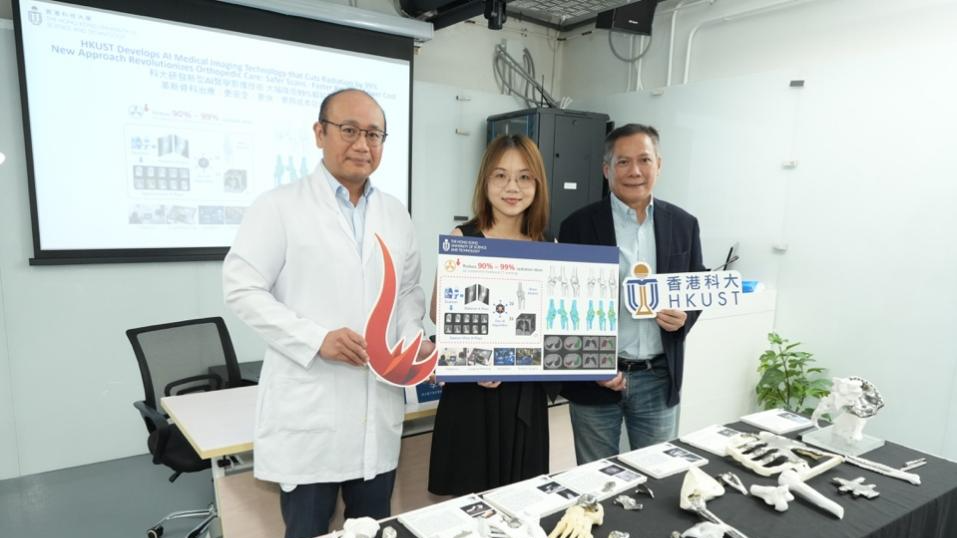
A technology that can generate three-dimensional images of patients’ bones and organs in less than a minute with minimal radiation exposure — much faster and safer than conventional approaches — has been developed by scientists from the Hong Kong University of Science and Technology (HKUST).
Powered by artificial intelligence (AI), the technology — which will be used to create 3D models — is slated for clinical trials in a public hospital by the end of this year, the research team said at a news conference on Thursday.
An advantage of the technology is that it can create three-dimensional bone images with just two to four X-ray scan snapshots, compared with the 400 to 500 computerized tomography (CT) scans required by traditional methods, significantly cutting the time of generating these images from a six-hour process to under a minute, while also reducing patient radiation exposure by up to 99 percent.
READ MORE: HKUST’s bid to establish city’s third medical school nears finish line
The cost is also projected to drop from the previous range of HK$2,000 ($255) to HK$3,000 to just a few hundred Hong Kong dollars.
Li Xiaomeng, leader of the research team and assistant professor at the HKUST Department of Electronic and Computer Engineering, said that the innovative technology hinges on a cutting-edge AI-powered algorithm crafted by her team.
Models created by the new technology have a 97 percent accuracy compared to those generated by conventional CT-based approaches, and are capable of assisting surgeons in preoperative planning.
This technology boasts a multitude of applications, particularly in orthopedics, where 3D bone printing marks “merely the first step”. Li conveyed her team’s plans to implement the technology in realms like real-time surgical navigation and personalized treatment planning. Furthermore, the team is also seeking collaboration with local hospitals to delve into its potential applications in cardiac and pulmonary imaging.
The research team said a public hospital is set to test the technology in the coming months. If proved effective, it could potentially be integrated into the city’s public healthcare system as early as next year.
Traditional CT scans are common medical imaging tools used to diagnose a wide range of conditions, guide surgical procedures, and produce 3D orthopedic and anatomical models to address complex conditions such as deformities, fractures and tumors.
READ MORE: HKUST aims to train research-minded medical students to boost HK's development
However, they expose patients to high levels of radiation, which can be particularly harmful to children, pregnant women and elderly patients who require frequent monitoring.
Currently, even prioritized patients in public hospitals have to wait about three weeks for receiving a CT scan, while X-ray scans can be completed in hours.
Edmond Yau, founder and CEO of bone-printing company Koln 3D Technology, said the collaboration with HKUST enables his team to deliver personalized solutions at scale, cutting costs by 50 to 70 percent.
Contact the writer at amberwu@chinadailyhk.com


